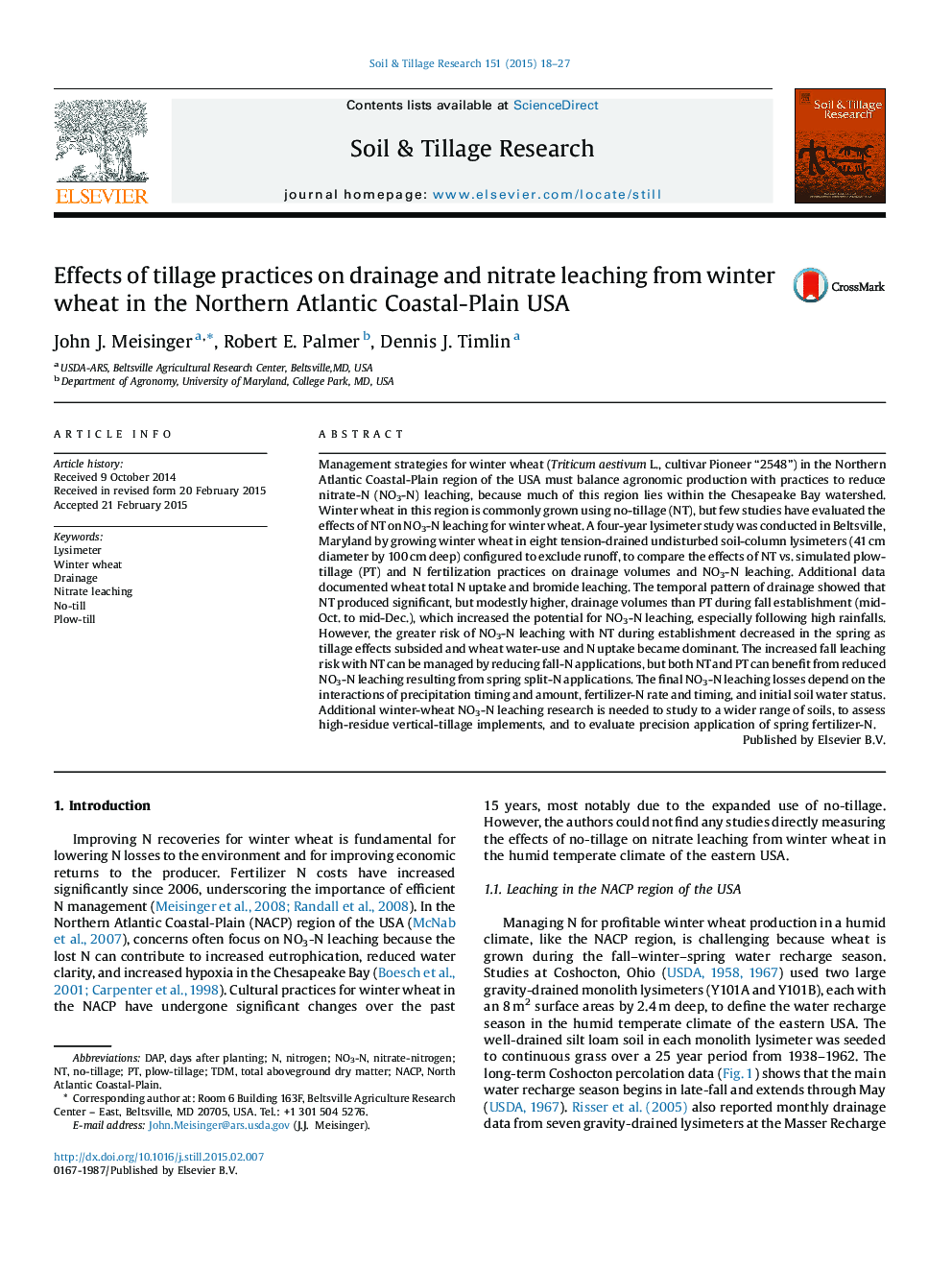| کد مقاله | کد نشریه | سال انتشار | مقاله انگلیسی | نسخه تمام متن |
|---|---|---|---|---|
| 305585 | 513036 | 2015 | 10 صفحه PDF | دانلود رایگان |
• No-till lysimeter drainage was greater than plow-till during the first two months.
• No-till nitrate leaching was also greater than plow-till the first two months.
• Nitrate leaching was similar for both tillage practices after the first two months.
• Timing nitrogen applications in phase with crop demand reduced nitrate leaching.
Management strategies for winter wheat (Triticum aestivum L., cultivar Pioneer “2548”) in the Northern Atlantic Coastal-Plain region of the USA must balance agronomic production with practices to reduce nitrate-N (NO3-N) leaching, because much of this region lies within the Chesapeake Bay watershed. Winter wheat in this region is commonly grown using no-tillage (NT), but few studies have evaluated the effects of NT on NO3-N leaching for winter wheat. A four-year lysimeter study was conducted in Beltsville, Maryland by growing winter wheat in eight tension-drained undisturbed soil-column lysimeters (41 cm diameter by 100 cm deep) configured to exclude runoff, to compare the effects of NT vs. simulated plow-tillage (PT) and N fertilization practices on drainage volumes and NO3-N leaching. Additional data documented wheat total N uptake and bromide leaching. The temporal pattern of drainage showed that NT produced significant, but modestly higher, drainage volumes than PT during fall establishment (mid-Oct. to mid-Dec.), which increased the potential for NO3-N leaching, especially following high rainfalls. However, the greater risk of NO3-N leaching with NT during establishment decreased in the spring as tillage effects subsided and wheat water-use and N uptake became dominant. The increased fall leaching risk with NT can be managed by reducing fall-N applications, but both NT and PT can benefit from reduced NO3-N leaching resulting from spring split-N applications. The final NO3-N leaching losses depend on the interactions of precipitation timing and amount, fertilizer-N rate and timing, and initial soil water status. Additional winter-wheat NO3-N leaching research is needed to study to a wider range of soils, to assess high-residue vertical-tillage implements, and to evaluate precision application of spring fertilizer-N.
Journal: Soil and Tillage Research - Volume 151, August 2015, Pages 18–27
